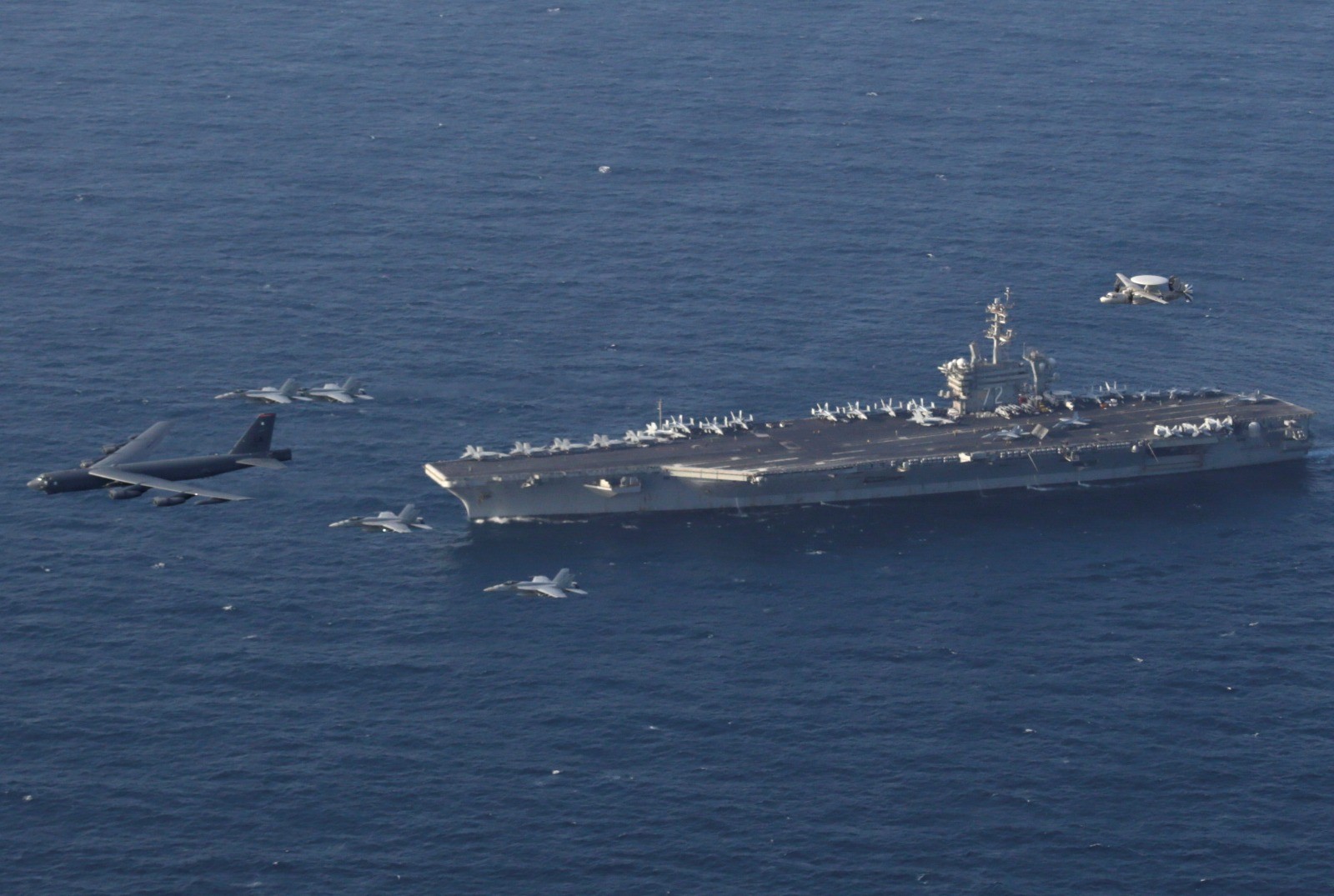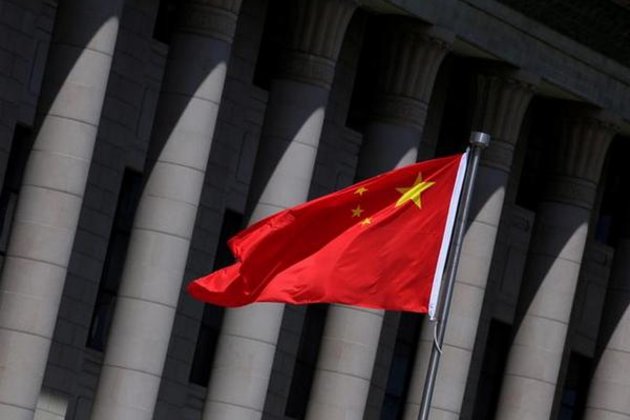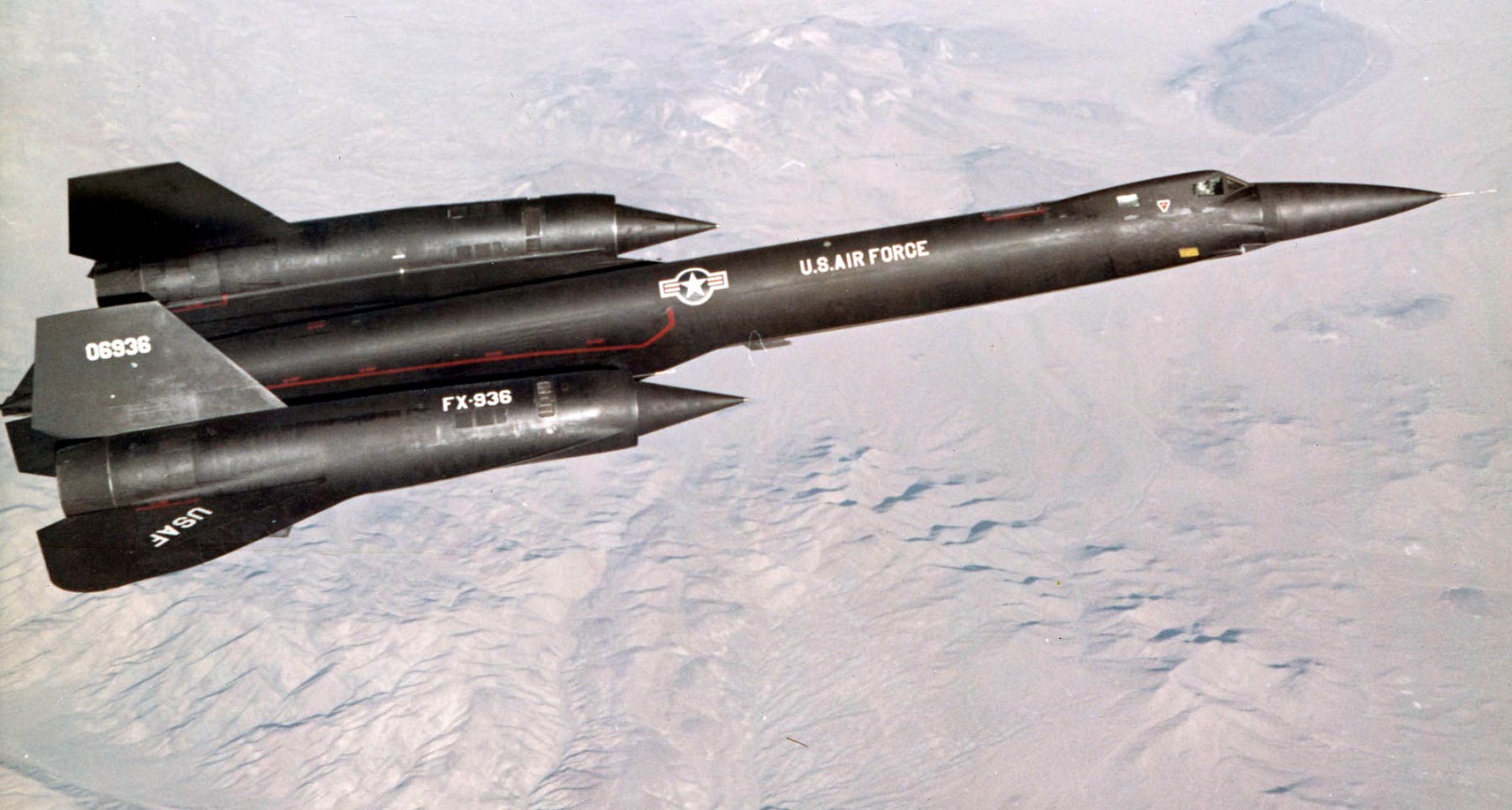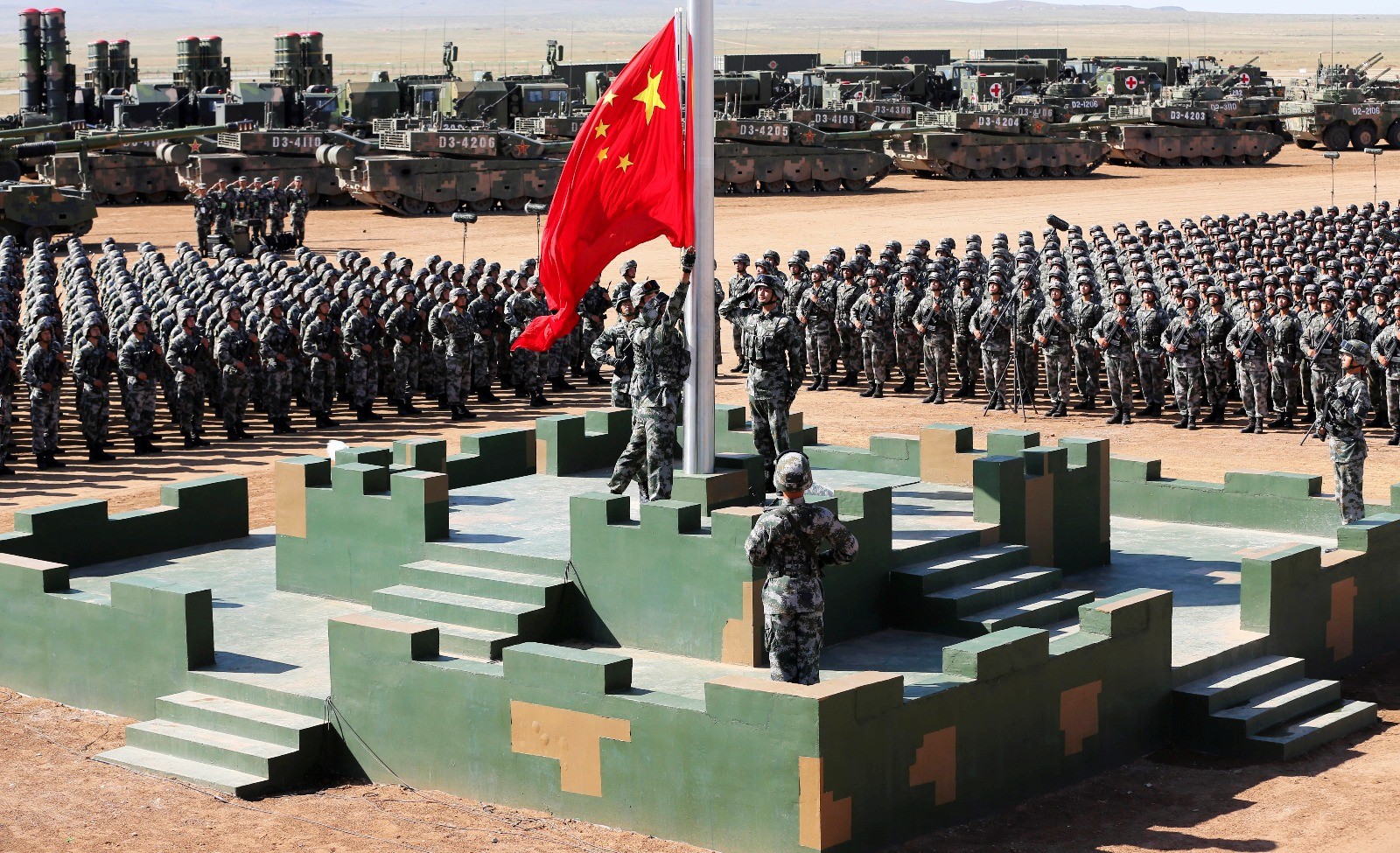Opinion
An Aircraft Carrier Armed With Nuclear Weapons? Why the Navy Said ‘No Way’

In the United States, it was assumed that nuclear weapons would be widely employed in future conflicts, rendering conventional land armies and fleets at sea irrelevant.
(This article appeared earlier this year.)
In the wake of the mushroom clouds that blossomed over the Japanese cities of Hiroshima and Nagasaki, it swiftly dawned on political and military leaders across the globe that warfare between superpowers would never again be the same. But what exactly were the implications of nuclear weapons when it came to planning military force structure?
In the United States, it was assumed that nuclear weapons would be widely employed in future conflicts, rendering conventional land armies and fleets at sea irrelevant. The newly formed Air Force particularly argued that carrier task forces and armored divisions were practically obsolete when (ostensibly) just a few air-dropped nuclear bombs could annihilate them in one fell swoop.
The Air Force touted it soon-to-be operational fleet of ten-thousand-mile-range B-36 Peacemaker nuclear bombers as the only vital war-winning weapon of the nuclear age. This logic resonated conveniently with the postwar political program mandating sharp cuts to U.S. defense spending and force structure—which the Air Force naturally argued should fall upon the Army and Navy.
The Army responded by devising “Pentomic Divisions” organized for nuclear battlefields, with weapons ranging from nuclear-armed howitzers and rocket artillery to bazooka-like Davy Crockett recoilless guns. The Navy, meanwhile, sought to find a way to integrate nuclear bombs into its carrier air wings. However, early nuclear bombs were simply too heavy for World War II-era carrier-based aircraft.
In 1945, the Navy began commissioning three larger forty-five-thousand-ton Midway-class carriers which incorporated armored flight decks for added survivability. The decks were swiftly modified to angular, effectively lengthened configuration for jet operations. Neptune P2V-C3 maritime patrol planes converted into nuclear bombers could take off from Midway-class carriers using rocket-pods but would have no way landing on the carrier deck.
Therefore, the Navy decided it needed huge supercarriers from which it could operate its own fifty-ton strategic bombers. These would displace over 40 percent more than the Midway at sixty-eight thousand tons, and measure 12 percent longer at 330-meters. In July 1948, Defense Secretary James Forrestal approved plans for five such carriers, the first named USS United States with hull number CVA-58.
The naval heavy bombers (which didn’t exist yet) were expected to have such wide wings that naval architects decided that CVA-58 would have a completely flush deck without the standard “island” superstructure carrying a radar and flight control tower. Instead, the carrier would feature side-mounted telescoping smokestacks that could be raised should smoke impeded flight operations, and a similarly retractable wheelhouse that could be extended to observe navigation and flight operations.
The ship’s air wings would include twelve to eighteen heavy bombers that would mostly remain parked on the flight deck, exposed to the elements. Four side-mounted elevators would ferry forty to fifty-four jet fighters between the hangar and flight deck to escort the bombers. Eight nuclear bombs per heavy bomber would also be stowed in the hangar. The combined ship’s company and airwing would total 5,500 personnel.
The carrier’s oddly-shaped deck included four steam catapults—two for use by bombers, and two axial “waist” catapults.
Because the ship would be effectively blind without an elevated radar and control tower, a separate cruiser was intended to serve as the carrier’s “eyes.” Nonetheless, CVA-58 still incorporated eight 5-inch guns for air defense, and dozens of rapid-fire short-range cannons.
The “Revolt of the Admirals”
Though theoretically capable of contributing to conventional strike and sea control missions, the heavy bomber-equipped CVA-58 was clearly an attempt by the Navy to duplicate the Air Force’s strategic nuclear strike capabilities.
This put giant crosshairs on the program during an era of sharp defense cuts. After all, deploying strategic bombers at sea was many times more expensive than basing them on land.
Following his reelection in November 1948, President Harry Truman replaced Forrestal—a naval aviator in World War I, and former secretary of the Navy—with Louis Johnson, who had fewer qualms about enforcing defense spending cuts.
In April 1949, just five days after CVA-58’s fifteen-ton keel was laid down in Newport News, Virginia, Johnson canceled the mega-carrier. He also began advocating dissolution of the Marine Corps, starting by transferring its aviation assets to the Air Force.
This upset the Navy bigwigs so much that Navy Secretary John Sullivan resigned, and numerous admirals began openly opposing the termination of a project they viewed as essential to validating their branch’s existence in the nuclear age.
This “Revolt of the Admirals” developed into a crisis in civil-military relations, as the Navy’s top brass defied the authority of their civilian commander-in-chief and resorted to covert methods in an attempt to influence public opinion. The Op-23 naval intelligence unit formed by Adm. Louis Denfeld secretly circulated a memo called the Worth Paper alleging that Johnson had corrupt motivations due to being a former director of Convair, manufacturer of B-36 bombers, which were also claimed to be deficient.
The bitter inter-service rivalry, and the utility of land-based bombers versus carriers, was publicly litigated in congressional hearings. The Army also piled on against the Navy, and public opinion turned against the sea-warfare branch as Op-23’s activities were revealed.
As Gen. Douglas MacArthur would later discover, Truman had no qualms about squashing military leaders that questioned his authority. His new secretary of the Navy, Francis Matthews, torpedoed the career of several admirals that spoke against the CVA-58’s termination despite an earlier promise that those testifying before Congress would be spared retaliation.
The irony of this tempest in a teacup, which resulted in the political martyrdom of many senior Navy leaders, was how misguided both sides swiftly proved to be.
In June 1950 the Korean War broke out, and the U.S. found itself desperately short of the necessary conventional land, air and sea forces. U.S. aircraft carriers and their onboard jet fighters soon bore the brunt of the initial fighting, and continued to play a major role until the end of the conflict.
And the Air Force’s vaunted B-36s? They never dropped a single bomb in anger—fortunately, as they were only intended for use in apocalyptic nuclear conflicts.
It turned out that plenty of wars were liable to be fought without resorting to weapons of mass destruction.
However, the Navy also had cause to count itself fortunate that the CVA-58 had been canceled. That’s because in just a few years the size of tactical nuclear weapons rapidly decreased, while high-thrust jet engines enabled hauling of heavier and heavier loads. By 1950, nuclear-capable AJ-1 Savage hybrid jet/turboprop bombers were operational on Midway-class carriers, starting with the USS Franklin Roosevelt.
These were soon followed by nuclear-capable capable A-3 Sky Warrior and A-5 Vigilante bombers, A-6 and A-7 attack planes, and even multirole fighters like the F-4 Phantom II. Carriers with these aircraft were far more flexible than a CVA-58 full of B-36 wannabees ever could have been. Arguably, by the 1960s the Navy’s ballistic missile submarines would amount to scarier strategic nuclear weapons than any aircraft-based delivery system.
The schematics for CVA-58 nonetheless informed the Navy’s first supercarriers, named rather appropriately the Forrestal-class, laid down during the Korean War. But the heavy-bomber carrying United States remains notable as the supercarrier the Navy absolutely thought it needed—but which with literally just a couple years more hindsight it discovered it truly could do without.
(This article appeared last month and is being republished due to reader interest.)
Sébastien Roblin holds a master’s degree in conflict resolution from Georgetown University and served as a university instructor for the Peace Corps in China. He has also worked in education, editing, and refugee resettlement in France and the United States. He currently writes on security and military history for War Is Boring.
Image: Reuters.
Opinion
Military rituals and military culture in China

Military culture influences military thinking and military strategy. Today, the armed forces of the major powers have the goal of defending their national interests and contributing to world peace.
(more…)Opinion
Forget the SR-71 Spy Plane: Meet the CIA’s A-12 (Was It Even Better?)

Key point: Both spy planes played key roles in the Cold War.
Analysis of Week’s photos located the USS Pueblo near Wonsan anchored next to two patrol boats—and also revealed that Pyongyang had not mobilized its troops for war. This led Johnson to rule out plans for a preemptive or punitive strike in favor of diplomatic measures which eventually saw the ship’s abused crew released nearly a year later.
On October 30, 1967, a CIA spy-plane soared eighty-four thousand feet over Hanoi in northern Vietnam, traveling faster than a rifle bullet at over three times the speed of sound. A high-resolution camera in the angular black jet’s belly recorded over a mile of film footage of the terrain below—including the over 190 Soviet-built S-75 surface-to-air missiles sites.
The aircraft was an A-12 “Oxcart,” a smaller, faster single-seat precursor variant of the Air Force’s legendary SR-71 Blackbird spy plane.
The jet’s driver, Dennis Sullivan had earlier flown one hundred combat missions in an F-80 Starfighter over Korea for the U.S. Air Force. But Sullivan was technically no longer a military pilot—he had been “sheep-dipped,” temporarily decommissioned to fly the hi-tech jet on behalf of the CIA. He now sat in the cramped cockpit in a refrigerated space suit, as the friction generated by his plane’s Mach 3 speeds heated the cockpit to over five hundred degrees Fahrenheit.
Sullivan noted warnings light up on his instrument panel as Vietnamese Fan Song radars locked onto him. But they did not launch missiles. In twelve-and-a-half minutes he completed his run and looped around over Thailand, where he received aerial refueling. Then he embarked on a second pass.
But the North Vietnamese were waiting for him. A missile launch notification warned him that a 10.5-meter-long missile was heading towards him.
Decades later, Sullivan described in a speech seeing one of the missiles streak just past him, two-hundred meters away.
“Here comes a big’ol telephone sailing right by the cockpit—going straight up. That’s interesting . . . So I continued down the route, and didn’t see anything—until I got down the road, and then I could see behind me in the rear-view periscope at least four missile contrails, all spread out. Those four contrails went up about 90-95,000 feet and all turned over, bunched up in a line, headed for my tail end.”
The A-12 officially had a maximum speed of Mach 3.2—but the missiles that were following Sullivan could attain Mach 3.5.
“I said, ‘Holy smokes—those things fly pretty good up there for something which doesn’t have much in the way of wings.’ So I watched them come.… They’d get up right behind me, very close, and all of the sudden there’d be a big red fireball—a big white cloud of smoke—and you’d immediately pull away from it. You were going thirty miles a minute. [Note: actually, 41 miles per minute!] Every one of those SAMs guided absolutely perfectly and did the same darn thing.”
The missile’s 440-pound proximity-fused warhead was designed to swat planes out of the sky within 65 meters of the point of detonation. However, in the thinner air of the upper atmosphere, its fragments could travel up to four times as far.
Sullivan escaped and landed his A-12 in Kadena Air Base, where it spent several minutes cooling on the tarmac before mechanics could even touch its friction-heated skin. The stress of the heat and high speeds exacted a steep physical toll on the jet’s pilots, who lost an average of five pounds of body weight on the completion of their three to four- hour missions.
He was sitting for debriefing when mechanics burst in the room to show him two metal fragments from a missile’s nose cone they had found buried under his low left wing—just shy of his jet’s fuel tank.
Later when, Sullivan’s camera footage was found to have captured the ghostly white contrails of six surface-to-air missiles surging towards him from the ground.
Operation Black Shield
The CIA’s twelve ultra-fast A-12 jets were doomed to a brief operational career after the first flight in 1962. Following on the heels of several U-2 spy plane shootdowns, Washington was no longer willing to authorize overflights of Soviet territory which the A-12 had been designed to perform. Meanwhile, the Air Force ordered a larger SR-71 variant of the A-12 that was deemed superior in a “fly off” in November 1967. Unwilling to fund both highly similar aircraft, the CIA’s A-12 fleet was promptly scheduled for retirement.
However for ten months, the A-12 briefly filled a vital niche providing rapid high-value photo intelligence over Asia, where the political and military risks were deemed acceptable. Between May 31, 1967, and March 8, 1968, CIA drivers flew A-12 on twenty-nine spy missions over Cambodia, North Korea and Vietnam in an operation codenamed Black Shield. The jets flew out of Kadena Airbase in Okinawa, Japan, supported by over 250 support personnel.
Initially, President Lyndon B. Johnson was concerned by reports that North Vietnam had obtained Surface-to-Surface (SSM) missiles for attacks on South Vietnam. On May 31, 1967, CIA driver Mele Vojvodich took of in a rainstorm and recorded a mile-long reel of camera footage covering most of Northern Vietnam. The reel was then air-transported for development by Kodak in Rochester, NY. The verdict, confirmed by subsequent overflights, was that Hanoi had no SSMs after all.
A-12 intelligence often directly influenced LBJ’s decisions to commit to air raids during the Vietnam War. However, the Oxcart’s stealth features never proved adequate to avoid detection by Soviet-built radars.
On October 28, 1967, an S-75 launched a missile at an A-12 flown by Miller, but did not come particularly close. However, after Miller’s close call two days later on October 30, the Black Shield flights were temporarily suspended. A later January 4 mission on the same route over Hanoi also elicited a missile launch, to no effect.
Meanwhile, on January 23, 1968, North Korean patrol boats seized the USS Pueblo, an American spy ship operating in international waters, taking her crew into captivity. Worrying the incident, combined with a failed commando raid on the South Korean presidential palace, might herald a second Korean War, Johnson was persuaded to dispatch an A-12 flown by Jack Weeks over North Korea on January 26.
Analysis of Week’s photos located the USS Pueblo near Wonsan anchored next to two patrol boats—and also revealed that Pyongyang had not mobilized its troops for war. This led Johnson to rule out plans for a preemptive or punitive strike in favor of diplomatic measures which eventually saw the ship’s abused crew released nearly a year later.
A-12s flew two additional missions over North Korea to keep tabs on the ship, which was eventually moved to Pyongyang. Tragically, Weeks died a half-year later on June 5 when a malfunction in his A-12’s starboard turbojet engine caused its to overheat, breaking his plane apart over the South China Sea. Sixteen days later, a CIA A-12 made its last flight before the type was retired from service.
Sullivan’s close brush over Vietnam suggests its fortunate no A-12 overflights were authorized over the Soviet Union, where they would have been exposed to even greater peril, from high-speed interceptors and more advanced SAMs like the S-200 (SA-5). Today, such high-risk photo intelligence is largely acquired by satellite, or by expendable drones.
Sébastien Roblin holds a master’s degree in conflict resolution from Georgetown University and served as a university instructor for the Peace Corps in China. He has also worked in education, editing, and refugee resettlement in France and the United States. He currently writes on security and military history for War Is Boring. (This first appeared in June 2019.)
Image: DVIDShub.
Opinion
SUN: China’s Military Deserves America’s Respect, But Not Its Fear

Key point: China’s military is advancing rapidly, but it is still plagued by corruption and discipline problems.
China’s new defense white paper has been eagerly awaited by Western analysts searching for clues to Beijing’s national security strategy.
The 2019 white paper (the last one was in 2015) lays out general principles of China’s defense policy. It avows the new face of the People’s Liberation Army (PLA). Cyberwarfare, more flexible command and control, long-range naval operations. Change the names and numbers, and you could be forgiven for thinking this was a planning document from the U.S. military or an American thinktank.
But before we fear the onslaught of the Dragon, take a look at the problems that the white paper says China’s military must solve.
The most glaring is corruption, which has led to numerous senior officers being punished for crimes such as selling promotions. “China’s armed forces are tightening political discipline and rules, investigating and dealing strictly with grave violations of CPC discipline and state laws,” the white paper says. “China’s armed forces punish corruption in strict accordance with CPC [Communist Party] discipline and relevant laws, and rectify any malpractice in key construction projects and the procurement of equipment and material…They have worked to implement full-spectrum audit, intensify the audit of major fields, projects and funds, and perform strict audits over the economic liabilities of officers in positions of leadership. Active efforts have been made to monitor the cost-effectiveness of applied funds, conduct whole-process audit, and combine civil and military efforts in auditing.”
The U.S. military has no shortage of faults. Careerism, inflated prices for military equipment, weapons that don’t work as advertised, the revolving door between the Pentagon and the defense industry. Nonetheless, it is hard to imagine the Pentagon having to cite corruption as a major impediment to military efficiency.
The U.S. military also has its share of discipline problems, such as Alcohol abuse, and sexual harassment that has derailed the careers of several senior officers. But these pale compared to the discipline problems that worry the Chinese military:
“China’s armed forces are building a military legal system with Chinese characteristics and pressing ahead with a fundamental transformation in how the military is run…They are promoting legal awareness through public communication and education campaigns, establishing and improving the support mechanism of legal consultation and service, and advancing law-based management in the military. China’s armed forces are striving to manage the troops more strictly in all respects. They have fully implemented military rules and regulations, restored and improved the traditional mechanism of using bugles to communicate and command, carried out safety inspections to identify and tackle potential problems, stepped up garrison military policing, strengthened the management of military vehicles by targeted measures, and set up a mechanism of regular notification on garrison military policing.”
There was nothing truly surprising in the white paper. It’s no secret that China has been moving away from a huge, low-tech peasant military to a smaller, more agile and high-tech force. Still, there is plenty in the paper to disturb the West as well as China’s Asian neighbors. China will continue to replace older aircraft and ships with more advanced models. It is setting its eyes on distant horizons: the PLA will “address deficiencies in overseas operations and support, builds far seas forces, develops overseas logistical facilities, and enhances capabilities in accomplishing diversified military tasks.”
And the Chinese military still has its eyes on Taiwan. “China has the firm resolve and the ability to safeguard national sovereignty and territorial integrity, and will never allow the secession of any part of its territory by anyone, any organization or any political party by any means at any time,” the white paper says. “We make no promise to renounce the use of force, and reserve the option of taking all necessary measures. This is by no means targeted at our compatriots in Taiwan, but at the interference of external forces and the very small number of “Taiwan independence” separatists and their activities. The PLA will resolutely defeat anyone attempting to separate Taiwan from China and safeguard national unity at all costs.”
Nonetheless, behind the curtain of hypersonic missiles and stealth fighters, is a military that worries about corruption and discipline. The Chinese military is to be respected, but not to be feared.
Michael Peck is a contributing writer for the National Interest. He can be found on Twitter and Facebook. (his article was originally published last month and is being republished due to reader interest.
Image: Reuters.






